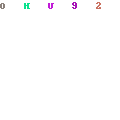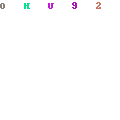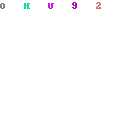Knowledge of search.smartsuggestor.com
search.smartsuggestor.com is a browser hijacker instead of a search engines or web directories even though it resembles them much. It modifies Windows Registry and sets search.smartsuggestor.com as a homepage in an effort to promote fake and rogue applications which, as a matter of fact, is a spyware. If you inadvertently allowed it to be a resident in your system, you will be constantly warned by a list of exaggerated threatens after it self-consciously scan your machine. Besides, you will be annoyed by nagging screens.Here's the screen shortcut image of search.smartsuggestor.com:
Problems made by it are not that simple as it hides its files, recreates other files after reboot, drops auto-launch keys in Regidit, all the above would significantly slow down the performance, make any running wired and abnormal. If you detect such hijacker, please remove it, since it doesn't come alone, it is supported and promoted by Trojan horses. Thus once you find this redirect infection resides within your machine, it means that your system has also been damaged by Trojan viruses. Therefore, the earlier the removal is the better for the computer as it would totally crash your machine in the end. It’s been proofed that manual removal is the top option to completely eliminate such hijacker, yet cumbersome procedure will be involved to block search.smartsuggestor.com sites, stop and remove processes, unregister DLL files, search and delete all other search.smartsuggestor.com files and registry utility. If you are not sure about the procedure provided below, please start a live chat with Tee Support expert 24/7 online.
Why I Need to Restore settings in the registry
Many risks make modifications to the registry, which could impact the functionality or performance of the compromised computer. While many of these modifications can be restored through various Windows components, it may be necessary to edit the registry. See in the Technical Details of this writeup for information about which registry keys were created or modified. Delete registry subkeys and entries created by the risk and return all modified registry entries to their previous values.Free Detailed Instructions to Remove search.smartsuggestor.com Step by Step
1. Go to the Start Menu. Select Control Panel → Add/Remove Programs.
2. Search for search.smartsuggestor.com in the list. Select the program and click Remove button.
3. Remove search.smartsuggestor.com browser add-ons Internet Explorer:
a) Open Internet Explorer. Go to Tools → Manage Add-ons.
b) Remove all search.smartsuggestor.com components
4. Go to the Registry Editor to delete all related entries listed below
a) Click “Start” menu, hit “Run”, then type “regedit” click “OK”.


b) Delete associated search.smartsuggestor.com files and registry values:
Files:
%AllUsersProfile%{random}*.lnk
%AllUsersProfile%{random}
Registry values:
HKCUSoftwareMicrosoftWindowsCurrentVersionInternet Settingsrandom
HKCUSoftwareMicrosoftWindowsCurrentVersionRunrandom
Tips for Future Virus Prevention
- Use a firewall to block all incoming connections from the Internet to services that should not be publicly available. By default, you should deny all incoming connections and only allow services you explicitly want to offer to the outside world.
- Enforce a password policy. Complex passwords make it difficult to crack password files on compromised computers. This helps to prevent or limit damage when a computer is compromised.
- Ensure that programs and users of the computer use the lowest level of privileges necessary to complete a task. When prompted for a root or UAC password, ensure that the program asking for administration-level access is a legitimate application.
- Disable AutoPlay to prevent the automatic launching of executable files on network and removable drives, and disconnect the drives when not required. If write access is not required, enable read-only mode if the option is available.
- Turn off file sharing if not needed. If file sharing is required, use ACLs and password protection to limit access. Disable anonymous access to shared folders. Grant access only to user accounts with strong passwords to folders that must be shared.
- Turn off and remove unnecessary services. By default, many operating systems install auxiliary services that are not critical. These services are avenues of attack. If they are removed, threats have less avenues of attack.
- If a threat exploits one or more network services, disable, or block access to, those services until a patch is applied.
- Always keep your patch levels up-to-date, especially on computers that host public services and are accessible through the firewall, such as HTTP, FTP, mail, and DNS services.
- Configure your email server to block or remove email that contains file attachments that are commonly used to spread threats, such as .vbs, .bat, .exe, .pif and .scr files.
- Isolate compromised computers quickly to prevent threats from spreading further. Perform a forensic analysis and restore the computers using trusted media.
Video Gide on How to Remove search.smartsuggestor.com
Note: nowadays, Antivirus Programs are fallacious as they are not capable of keeping abreast of viruses’ evolution or mutation.If you can't proceed the steps, please feel free to contact Tee Support experts 24/7 available for real-time tech support.


No comments:
Post a Comment